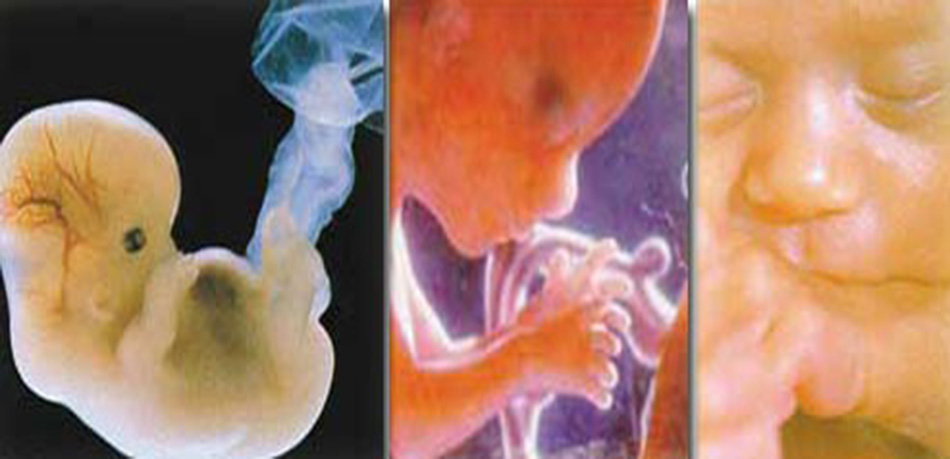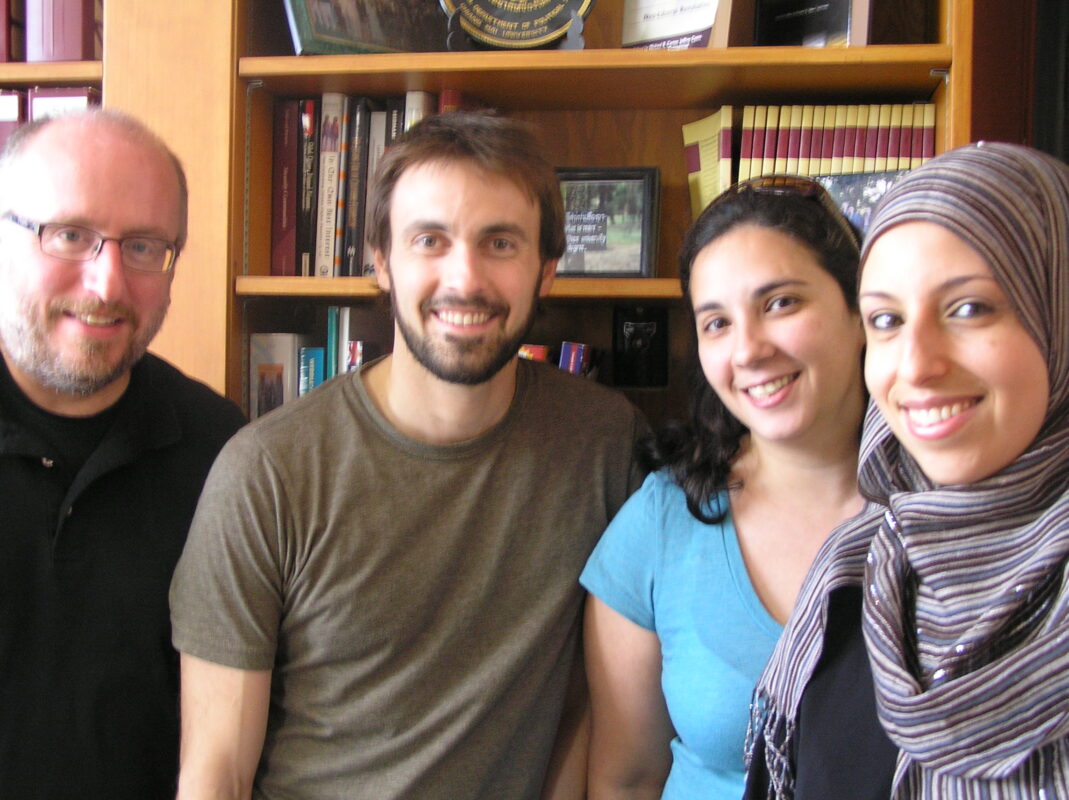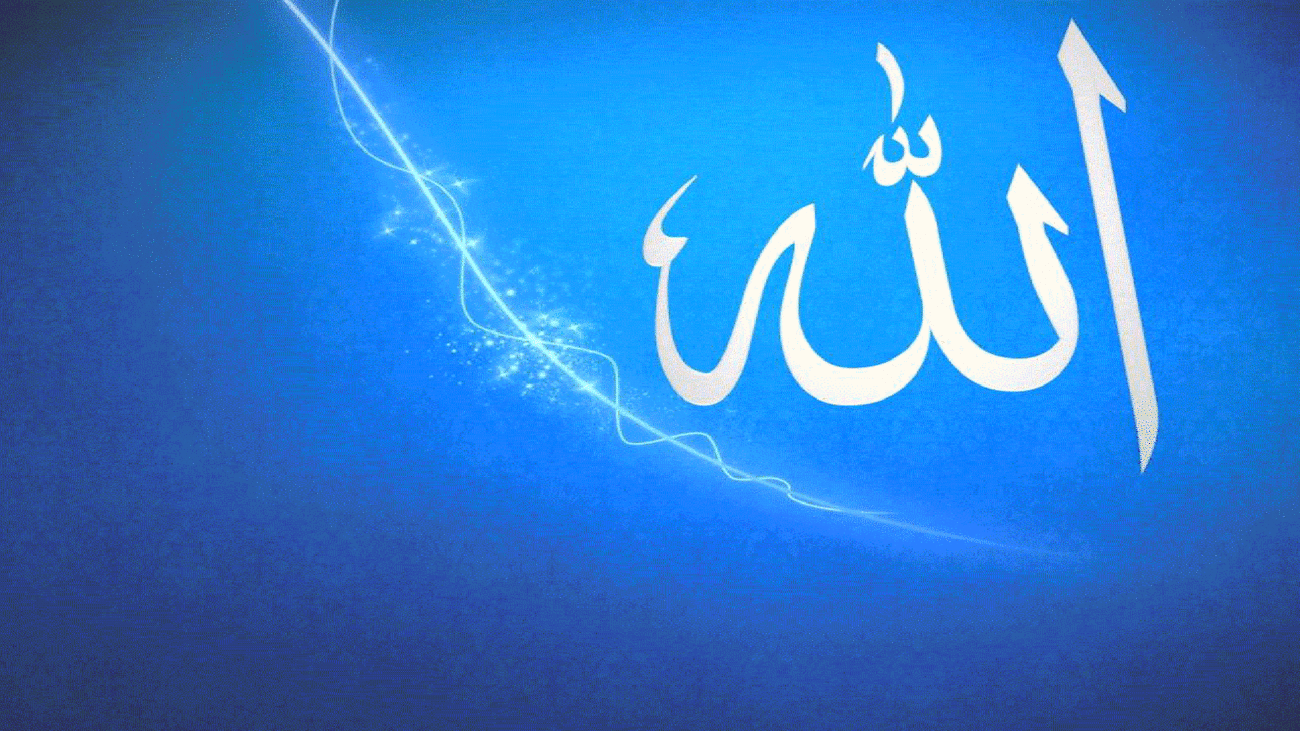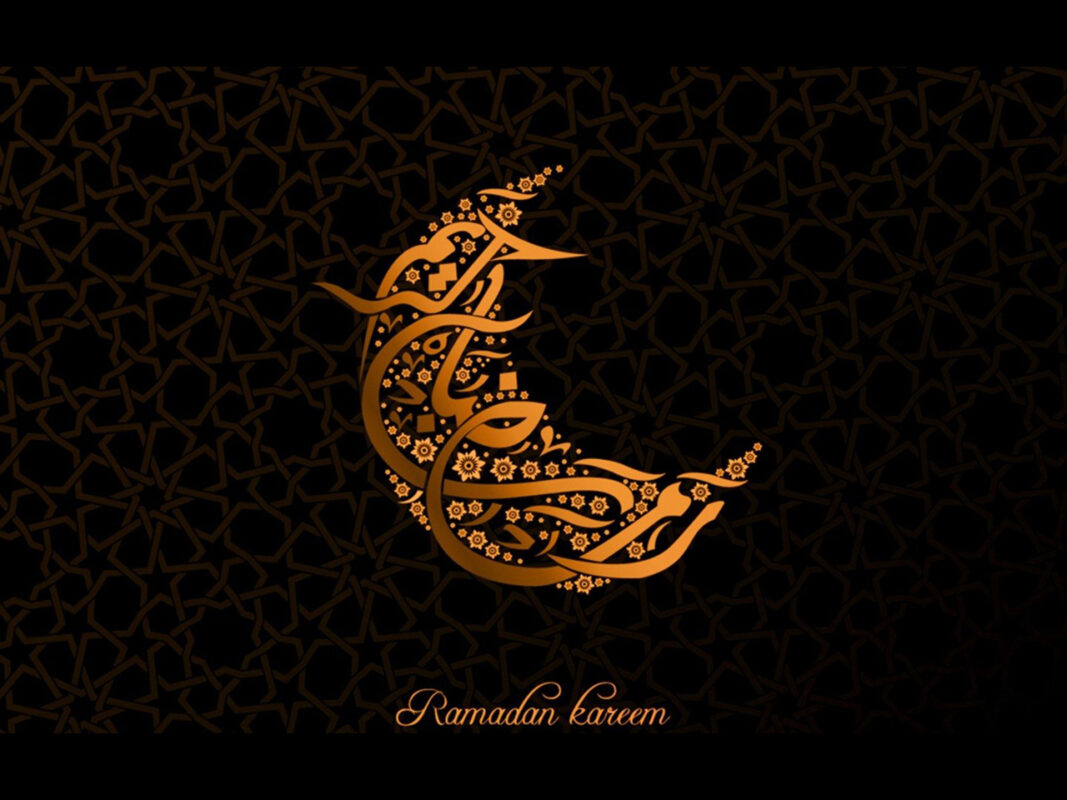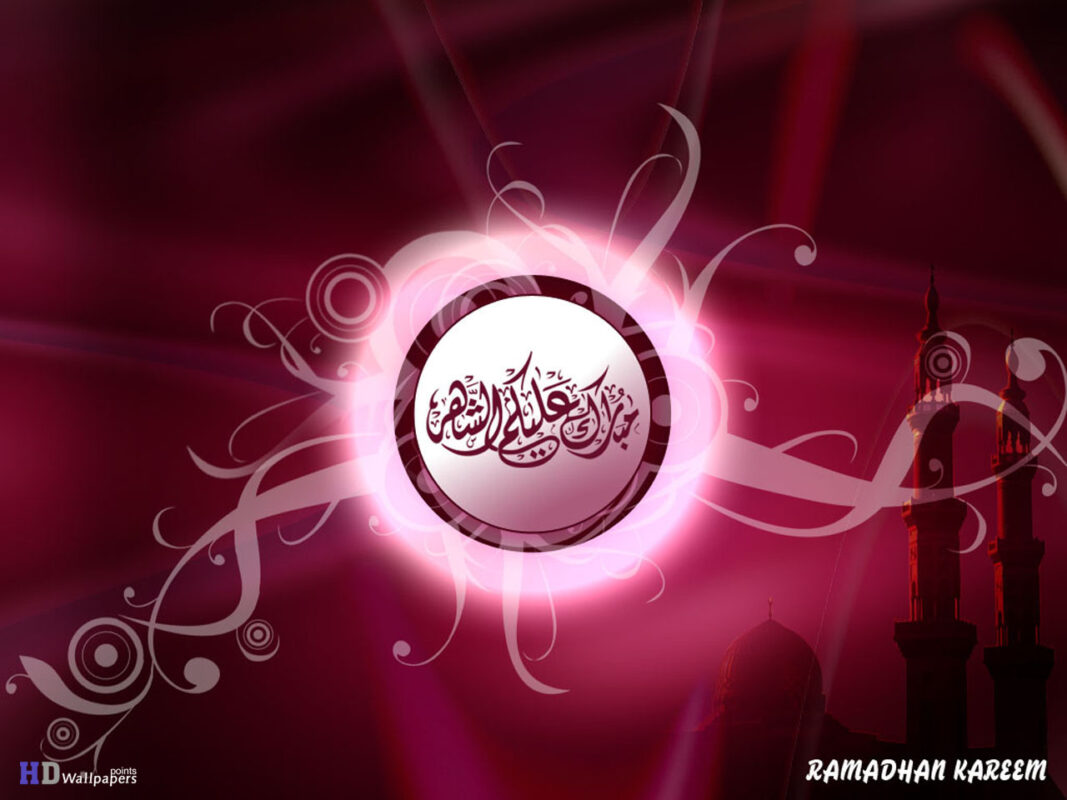“… and then We brought it forth as another creation. So Blessed is Allâh, the Best of creators” (I)
The miraculous ayah under discussion in this article is located in the beginnings of Surah al-Mu’minun (The Believers). It is a Makkan Surah and has a total number of 118 ayahs following Basmalah. It is entitled al-Mu’minun since it praises Allah’s believers assigned with designated missions on earth. It discusses a number of their noble qualities that represent the exemplar human with whom Allah (SWT) would be pleased.
Tenets of Faith in Surah Al-Mu’minun:
- Faith in Allah (SWT), in His angels, books, and messengers, in the last day, and in immortality in the hereafter, whether to dwell forever in jannah (paradise) or in hellfire. The Surah shows that people shall not inherit jannah (for eternity), except for the true believers, the description of whose good qualities the Surah has included. Believers have faith that Allah (SWT) is the All-Knower of the unseen and the seen, and The Sustainer. He gives life and causes death. To Him belongs the alternation of night and day, and He is the Lord of the Mighty Throne.
- Allah (SWT) is above all attributes found in His creations, and is above all imperfections that do not conform with His Majesty such as the false allegations that Allah (SWT) has a partner, peer, adversary, wife or son; all of which are attributes of creations when the Creator is surely clear of all the characteristics of His creatures.
- The certitude that Allah (SWT) has created man out of an extract of clay, determined the way of his reproduction, and the phases of embryonic development one after another with extreme accuracy until he becomes a human being, ready for entrance to the outside world as a fully-developed baby. The child grows and lives for as long as he is destined to live and then dies after his life is spent. This is followed by resurrection, judgment, and reward, which will be living forever in either jannah or hellfire. Man is not created in vain, but rather to be tested through the afflictions he faces in his life and to be rewarded for his actions when he returns to his Creator.
- The acknowledgment that Allah (SWT) is the Creator, the Lord, the Owner of all things, and the One who manages all of their affairs. Allah (SWT) created the seven heavens, the seven earths, and all that is in them. An extraordinary example of how Allah (SWT) manages all affairs of life on earth is the water cycle of this planet. After the evaporation of a determined quantity of water, it falls from the heaven in the form of rain; thus playing an important role in the flourishing of life on earth. The surplus of water goes to the seas and oceans, some of the water settles in the rocks of the earth’s crust to become a source of life in areas that lack running water. It is Allah (SWT) Who reserves this amount of underground water with His Mercy and Wisdom, as He is capable of submerging the water deep in the ground or at the same time, of removing it completely, whenever or however He likes and at His own prerogative.
Allah (SWT) also created plants and all different kinds of vegetation. He created cattle with udders full of milk to drink. He made their flesh edible, and made them serve numerous purposes for the benefit for mankind. Allah (SWT) created everything and He is the All-Knower of everything.
Signs of Creation in Surah Al-Mu’minûn:
- The Surah indicates that man was created from an extract of clay. It describes the phases of embryonic development with total accuracy until it develops into another creation. The size of the embryo, in such stages, varies from fractions of a millimeter to only a few millimeters. This accurate description was revealed in the Qur’an at a time when there was a prevailing belief that the fetus was created as a whole miniature version of itself from the female’s menstrual blood only or from the male’s sperm. This size was described with such accuracy in the absence of all means of magnification, imaging or medical examination at that time.
- The Surah refers to the creation of the seven heavens, an unseen truth, which modern acquired knowledge and science cannot establish due to the vastness of the universe, and its seemingly infinite dimensions to which only Allah (SWT) knows its end.
- Surah al-Mu’minun mentions how water falls from the heaven in a given amount and how, with Allah’s absolute wisdom, a part of it settles in the rocks of the earth’s crust in a precise quantity. Acquired sciences have discovered this fact in late nineteenth century only.
- The Surah makes a connection between how rain falls from the heaven and how plants rise from the soil. It moreover describes the olive tree and how it produces olive oil and seasoning, which gives pleasure to diners when used as dip. The Surah focuses here on the olive tree that grows in Mt. Sinai in particular.
- The Surah points out the great blessings in the creation of cattle when it refers to their numerous benefits such as their milk, fat and meat. It also reveals the importance of using cattle as means of transportation and in carrying things on land in the same way ships are used in the sea.
- The Surah mentions the sense of hearing before that of seeing or perception. Embryology hereby asserts that the sense of hearing develops before the aforementioned senses. Therefore, the fetus can hear before it starts to see or perceive.
- It acknowledges the fact that earth is almost spherical in shape and that it rotates around its own axis before the sun. It indicates this in an implicit way by referring to the alternation of night and daytime.
Since each of the above issues require individual explanation, I shall focus here on how the embryo develops into another creation after the chewed up morsel is transformed into bones that are later covered with flesh (muscles and skin) as referred to in number 1 above.
The Scientific Implications of the Qura’nic text:
Although the face starts to take its shape at a very early stage of the embryo’s development, it does not establish the human facial features except after the creation of the bones which are dressed with flesh later. Accordingly, Allah (SWT) says:
“And indeed We created man (Adam) out of an extract of clay (water and earth); Thereafter We made him (the offspring of Adam) as a Nutfah (mixed drops of the male and female sexual discharge and lodged it) in a safe lodging (womb of the woman); Then We made the Nutfah into a clot (a piece of thick coagulated blood), then We made the clot into a little lump of flesh, then We made out of that little lump of flesh bones, then We clothed the bones with flesh, and then We brought it forth as another creation. So Blessed is Allâh, the Best of creators” (II)
Due to the long time intervals and the immensity of the kind of transitional changes in development from an extract of clay to a sperm-drop in an established residence, and from a zygote (fertilized ovum) into other phases of embryo development, the Ever-Glorious Qur’an uses the conjunction “thumma” that means “thereafter”. This conjunction is used in the Arabic language to imply the slow movement from one state to another while retaining a specific order. As for the interconnection found between the following phases from a clot structure to a chewed up morsel until it is transformed into bones that are to be clothed with flesh (muscles and skin), the Qura’nic text uses the conjunction “fa” that means “then”. However, “then” in this context conveys the Arabic meaning which implies quick and interconnected movement from one phase to another while maintaining order at the same time. Once again, and due to the extensive transition in the development and the long time the embryo needs to move to another stage, the Qura’nic text uses the first conjunction “thumma ” to connect the phase of “clothing the bones with flesh” and that where the embryo becomes another form altogether.
At the very late stages of the clot phase, the first somites are created. Somites distinguish the chewed up morsel phase, in which they fully develop, to give the embryo the shape of a lump of flesh that looks as if chewed by teeth with their prints on it. Allah (SWT) gave this chewed up morsel the ability to transform only half of itself to form the axial skeleton (vertebral column and ribs) of the embryo (sclerotome). The other half starts to cover the bones with flesh (skin and muscle component). This explains why it is called the dermo-myotome.
Due to the enormous transition from these phases to the ones that followed, the Ever-Glorious Qur’an related these phases to each other by saying, “… and then We brought it forth as another creation.” (Surah Al-Mu’minûn: 12-14). The conjunction “thumma” (thereafter) was used to imply the slow movement from one phase to another while retaining a specific order.
Accordingly, the Qur’an divides the process of the creation of the human embryo into five phases as follows:
First: The Nutfah (Sperm-drop or Zygote) Phase:It is the Fertilized Ovum stage, or the sperm-drop phase, in which it grows by division to form what could be termed as ‘morula’ or ‘blastula’. This phase lasts for almost one week from the date of fertilization.
Second: The Clot (Leech-Like Structure) Phase:The beginning of this phase is marked by the ‘blastula’ adhering to the wall of the uterus on the sixth day after fertilization. This phase continues until the end of the 25th day. Thus, it lasts for a period of two to three weeks in which it looks like a leech parasite clinging to its host, especially in the way it feeds on the host’s blood.
Third: The Chewed up Morsel Phase:This phase starts approximately on the 26th day after fertilization when the ‘somites’ are fully developed, thus giving the embryo the shape of a little lump of flesh chewed by teeth that left their prints on it.
Fourth: The Phase of Bones Creation and Covering them with Flesh:This phase could be termed as ‘The Organogenesis Stage’. It commences from the end of the fourth week and finishes at the end of the eighth week. The most active process of this phase reaches its climax by the end of the sixth week (the 42nd day after fertilization) when the cartilaginous bones start to develop to continue spreading throughout the whole body of the embryo by the end of the eighth week. The bones start to become clothed with flesh (muscles and skin) from the end of the seventh week until the end of the eighth week.
In this context, Prophet Muhammad (SAWS) said, “When forty two nights pass by the nutfa or sperm-drop Allah (SWT) sends an angel and gives the embryo the shape. Then he creates his sense of hearing, sense of sight, his bones, his flesh, his skin, and then says: My Lord, would he be male or female? And your Lord decides as He desires and the angel then puts down that also.” (Authentic Hadith, narrated by Muslim).It is worth mentioning that the gonads were found to develop at the fifth week and during this undistinguishable stage, an embryo has the potential to develop into either a male or a female. The gonads do not begin to attain sexual characteristics until the seventh week, i.e. after the 42nd day.Anas Ibn-Malik reported directly from Allah’s Messenger (SAWS) that he said, “Allah (SWT) has appointed an angel as the caretaker of the womb, and he would say: My Lord, it is now a nutfa or a sperm-drop; my Lord, it is now a clot; my Lord, it has now become a chewed morsel, and when Allah (SWT) decides to give it a final shape, the angel says: My Lord, would it be male or female or would he be an evil or a good person? What about his livelihood and his age? And it is all written as he is in the womb of his mother.” (Authentic Hadith, narrated by Al-Bukhari and Muslim).Allah’s Messenger (SAWS) said:“(The matter of the Creation of) a human being is put together in the womb of the mother in forty days, and then he becomes a clot for a similar period, and then a piece of flesh for a similar period. Then Allah sends an angel who is ordered to write four things. He is ordered to write down his (i.e. the new creature’s) livelihood, his deeds, his (date of) death, and whether he will be blessed or wretched (in religion). Then the soul is breathed into him.” (III)By the beginning of the seventh week, the cartilaginous skeleton spreads throughout the whole body of the embryo and gives it the basic human features. The bones’ development is the most distinctive feature of that phase, in which the length of the embryo increases to almost 23 mm. Other external features start to show as well, such as the following:
- The formation of the skeleton to become dressed in flesh (muscles and skin).
- Straightening of the embryo’s arch-shaped body.
- Shaping the facial features which include the eyes, ears and nose.
- Designating the neck area and the creation of the pharyngeal arches on the sides.
- The upper limbs begin to sprout out followed by the lower ones, then each begin to develop their own shape.
- The elongation of the mesentery into the umbilical cord.
- The creation of the gonads, however, they remain undistinguished until the seventh week.
Fifth: The Creation Phase:By the end of the eighth week, the embryo’s length reaches 30 mm; the skeleton becomes fully developed and covered with flesh (muscles and skin). The internal organs are almost developed on primal basis and have taken their places within the embryo’s body. Thus, the embryo undergoes the fetus phase that starts at the beginning of the eighth week (the beginning of the third month of pregnancy) and ends with the delivery process. This phase is characterized as the longest one during pregnancy and takes almost seven whole months. This explains why the conjunction thumma (thereafter) was used to imply the slow movement from one phase to another while retaining a specific order in the graceful ayah when Allah (SWT) says
“… and then We brought it forth as another creation. So Blessed is Allâh, the Best of creators” (I)
- That phase is characterized by its continuous development. The fetus starts to gain human features by the end of the third month. The following are the most important features of this phase:
- The length of the fetus increases to reach almost 90 mm.
- The face and neck become fully created and the retina develops to form 4 layers with the eyelids still stuck together until the end of the sixth month.
- The limbs become fully created and the nails start to appear in the finger ends.
- Vertebrae can be fully distinguished.
- Full creation of the heart with its pericardial membrane, the spleen, and the two suprarenal glands above the kidneys.
- The urinary, the reproductive, and the gastrointestinal systems are distinguished due to the presence of ‘the cloaca’.
The development of the fetus continues in the fourth months. The process of feeding the muscles and the skin with nerves connected to the brain is completed, thus receiving and executing orders from the brain. Accordingly, the voluntary muscles start to move and the fetus starts to gain the distinctive human facial features. The facial muscles begin to express the health and the psychological state of the fetus. The external genitalia are distinguishable and the placenta becomes functionally independent. During the tenth week, the intestines withdraw themselves from the location of the umbilical cord to go inside the abdominal cavity. A fetus can hear at 30 weeks of gestation i.e. at the eighth month. The fingerprints are created and a light lanugo shows on the head and on some parts of the body.The heart, liver, and the reproductive system become fully developed. The intestines are completely drawn to take their place inside the abdominal cavity. The hair starts to appear on the head and on the eyebrows with lanugo covering the body. The mother then begins to feel the movement of her baby inside her belly.The rate of growth of the fetus increases in the sixth month until the length of the fetus reaches almost 350 mm, and its weight becomes almost one kilogram. His body becomes covered with a fatty layer and the amniotic fluid surrounding it increases greatly. Interlinking of the brain’s neurons begins in the sixth month and is almost complete by the seventh month of gestation.In the seventh month, the retina becomes fully developed reaching nine layers. In addition, the optic nerve decussates to form what is termed the “Optic Chiasma” or the decussation of optic nerves until it reaches the posterior part of the brain. The tunica vasculosa of the eyeball (lentis vascular capsule) becomes thin so that a cut occurs in the middle to form the pupil. The eyelids separate into upper and lower lids and their lashes grow after each of the choroids, cornea, sclera, conjunctiva, and the lacrimal glands are created. The fetus’ body starts to enlarge as the fatty layer under its skin thickens, and both the nervous and digestive systems become fully developed.In the eighth month, hair grows heavily, the body of the fetus enlarges and the lanugo falls off. The body becomes covered with a caseous fatty substance and the nails reach the fingertips. The fetus then continues to grow for the rest of the 266 days of pregnancy until it becomes fully developed especially with regards to the respiratory system (lungs and alveoli).Such major transformations of the fetus occurring during the period between the end of the eighth week (the bones creation phase and their clothing with flesh) and the end of the pregnancy period (the end of the 38th week of the fetus’ age) were explained in the ayah by using the conjunction “thumma” (thereafter) to imply the slow movement from one phase to another while retaining a specific order. Allah (SWT) says
“… and then We brought it forth as another creation. So Blessed is Allâh, the Best of creators” (I)
The phases of embryological development as described by embryologists, in the 21st century almost agree with the Qur’anic explanation of this issue. The Ever-Glorious Qur’an has maintained the accuracy and paid extreme attention to details that were not covered or reached by modern science. The Qur’an was revealed to Prophet Muhammad (SAWS) almost one thousand four hundred years ago when people lacked the simplest means of inspection, imaging or magnification and when legends and fallacies prevailed. Back then, people thought that man was created altogether at the same time from the female’s menstrual period or from the male’s semen without any intermediary phases except for the growth in size.
Only Allah (SWT) can provide a source of such information in His miraculous ever-glorious book that was revealed to the Seal of the Prophets, Muhammad (SAWS). Hence, all what is entailed in this book would be living evidence proving that the Ever-Glorious Qur’an contains the words of Allah (SWT), and proving the Prophethood and the message of the Seal of the Prophets (SAWS) who received it, delivered the message, fulfilled what he was entrusted with, guided the nation, and struggled in the cause of Allah (SWT) until his final days. Let us ask Allah (SWT) to reward him with the best of what He rewarded His prophets and messengers for fulfilling their messages. O Allah! Grant Muhammad (SAWS) nearness and excellence and raise him to the position of glory which You promised, and bestow his intercession on us on the Day of Judgment. All praise is to Allah Alone, and may His peace and blessings be upon His Messenger and Slave, our Prophet Muhammad (SAWS), his family and his companions.
(I): Surah Al-Mu’minûn (The Believers):14
(II): Surah Al-Mu’minûn: 12-14
(III): Authentic Hadith, narrated by Al-Bukhari
(IV): Surah Al-Mu’minûn: 14
Source: Dr. Zaghloul El-Naggar [External/non-QP]

